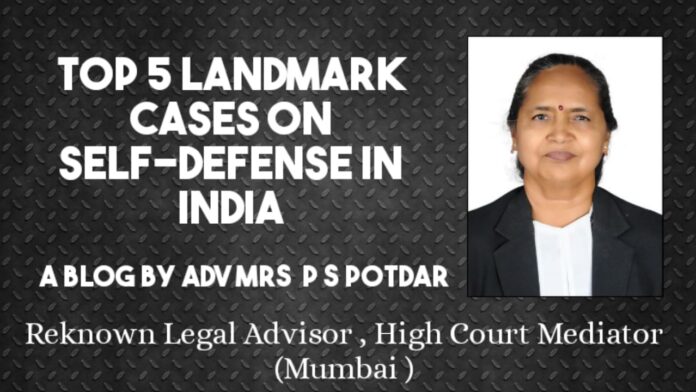Self-defense is a fundamental right of every citizen, but it is important to understand the legal nuances of this right. As a legal services professional and high court mediator in Mumbai, I have come across many cases related to self-defense. In this blog, I will share with you the top 5 landmark cases related to self-defense in India, along with the relevant sections of the law.
1. State of U.P. v. Hari Chand: In 2009, the Supreme Court of India held that a person is entitled to use force in self-defense only to the extent it is necessary. The court also held that the right of self-defense is subject to the limitation that the force used must be proportionate to the harm threatened. This case was decided under Section 96 of the Indian Penal Code (IPC).
2. Om Prakash v. State of Rajasthan: In 2002, the Rajasthan High Court held that a person has the right to use deadly force in self-defense if there is a reasonable apprehension of death or grievous hurt. The court also held that the accused cannot be held liable for exceeding the right of self-defense if he had acted under a reasonable apprehension of death or grievous hurt. This case was decided under Section 96 and Section 97 of the IPC.
3. Bhagwan Singh v. State of Haryana: In 1987, the Supreme Court of India held that a person has the right to defend his property using reasonable force. The court also held that the right of self-defense can be claimed by a person even if he had the opportunity to retreat from the situation. This case was decided under Section 97 of the IPC.
4. State of Maharashtra v. Balu: In 2007, the Mumbai High Court held that a person can use force in self-defense even if he had provoked the assailant. The court also held that the right of self-defense can be claimed by a person even if he was not in immediate danger. This case was decided under Section 96 and Section 97 of the IPC.
5. Rattiram v. State of Madhya Pradesh: In 2007, the Madhya Pradesh High Court held that a person has the right to defend himself against a group of assailants. The court also held that the force used in self-defense need not be equal to the force used by the assailants. This case was decided under Section 99 of the IPC.
These landmark cases have helped to establish the legal framework for self-defense in India. It is important to note that the right of self-defense is not absolute and is subject to certain limitations. It is essential to seek legal advice and guidance before resorting to self-defense.
As citizens of India, it is important to understand our rights, especially when it comes to self-defense. These cases serve as a reminder that we have a right to protect ourselves, but it is important to do so within the legal framework. Let us continue to educate ourselves and others about our rights and responsibilities, and work towards creating a safer and more just society.
References:
1. State of U.P. v. Hari Chand (2009) 4 SCC 45
2. Om Prakash v. State of Rajasthan AIR 2002 Raj 46
3. Bhagwan Singh v. State of Haryana AIR 1987 SC 355
4. State of Maharashtra v. Balu (2007) 10 SCC 775
5. Rattiram v. State of Madhya Pradesh (2007) 2 MP LJ 376

















